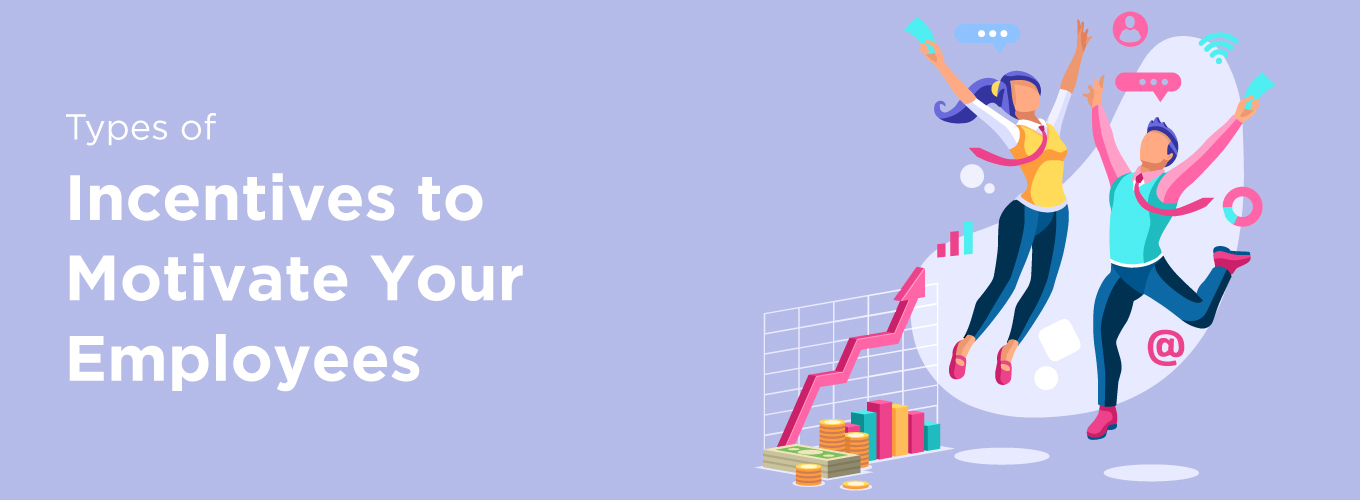Types of Incentives to Motivate Your Employees
Most companies grapple with issues such as employee engagement and employee morale. Mostly leaders and HR play a significant role in sustaining employee engagement and motivation. One of the key factors of employee satisfaction is “quality of senior leadership” and it is their responsibility to provide employees with the resources they need to stay motivated. One of the most important things that they do to keep employees engaged is to effectively incentivize them. Incentives give employees something to strive for and in some ways, incentives provide tangible acknowledgement for the hard work put in by the employees. Incentives make employees feel more motivated to do their best. Incentives are effective motivation tools that can encourage productivity and show appreciation to the employees. Incentives can be either financial or non-financial.
Table of Contents
Value of employee incentive programs
Organizations worldwide recognize the value of incentives. Incentive programs work because they leverage human behaviour. Research has shown that employees who are rewarded more frequently are more motivated to complete associated tasks. Organizations with incentive programs experience a high success rate in achieving their established goals. Incentives can not just motivate but also increase employee performance. When a company provides a reward for exceptional work or team recognition, they are more likely to foster positive work environments. Incentives also help in:
- Boosting employee satisfaction
- Providing recognition for individual performance
- Encouraging collaborative teamwork
- Motivating staff to achieve company objectives
There are various types of incentives. Some of them are monetary and others are social and of other types. Let us examine a few of them in this article.
Rewards and Recognition
Most employees feel that the rewards and recognition program motivates them to work better and stay on in their current job. Organizations that focus on the culture of recognition see a higher rate of employee engagement and retention. Recognition is a great tool for incentivization. Recognition must be given frequently and in real time. Recognition could be either social or even monetary: through a point-based reward system. Employees can later redeem the points and choose merchandise, digital or physical gift cards, experiences, concierge, fashion, hotels or even music. Social recognition on the other hand can motivate peers and inspire them.
Referral programs
Most companies spend a lot of time and money is recruitment advertisements and sourcing and recruiting good candidates. Instead, an employee referral program can be rewarding for both the employer and the employee. Employers can offer rewards and benefits for candidate referrals. Employees often appreciate a monetary benefit for recommending candidates. Since your employees know the work culture, they are more likely to recommend people they know will fit in with the way people work in their organization. You could remind employees about the referral program often and integrate it into your regular rewards and recognition program.
Professional development
Employees value professional development and when they know that you are investing in their careers, it matters to them and they stick around longer. You could create your own learning and development (L&D) program or take help from third party learning management systems. Many companies also include mentoring in this program and make it more valuable for the employees.
Profit sharing
In this type of plan, employees receive contributions to their retirement account either in the form of cash or stock or even direct payments. Although this is a financial incentive, it empowers employees to have an owner mindset rather than just an employee mindset. They take greater accountability for work and work on getting things done. Some companies use retirement benefits rather than profit sharing as a tool to incentivize employees.
Health and wellness
Wellness incentives are crucial if you want to prevent burnout and promote physical and mental well-being. Employees face a lot of pressure at work, hence bringing in a focus on health and wellness at the workplace is a great energiser and incentive for employees. You could look at options like healthy lunches, on-site health screening, wellness fairs or even standing desks for those who want an option. You could also reward those who complete a step challenge or those who quit smoking for instance. You could also ensure that your rewards and recognition program has healthy options in the rewards from which employees could choose.
Bonuses and raises
Rewarding employees with bonuses and raises can be powerful and is a common type of financial reward. These bonuses could be given for: completing an important project on time, achieving an objective outside of the normal job description, important milestone such as a work anniversary or a reward for employee referrals.
Fun gifts
You could celebrate employees and show that you care by giving gifts on specific occasions like work anniversaries, customer service week or global wellness day and so on. You could make things more fun by including a quiz or some games and reward those who win or participate actively. You could curate gifts like onsite foot massages, catered lunches or even half a day off from work.
Choice of projects
Allowing high-achieving employees to choose their own projects is a great way to empower and incentivize them. Managers who let their employees choose what they want to work on build trust with the employees. Employees feel that the organization trusts them and in turn, they go the extra mile for the organization. It is also helpful when team leaders communicate with their employees about their short and long-term career goals and interests so that they can offer projects to match these.
Conclusion
It is important to have a collaborative effort towards creating an incentive program in an organization. Look for inputs from various people and re-evaluate incentives that are already in place and eliminate any incentives that are outdated and irrelevant. Ensure that your incentive program covers employees at all levels: from entry-level, mid-level to senior-level roles. Ensure that there is a balance of incentives to recognize both individual and team performances.









